…and catching up with the Apollo 13 astronauts after their return
On May 7, 1970, NASA Administrator Thomas O. Paine announced that the next Moon landing mission, Apollo 14, would launch no earlier than Dec. 3, the delay from the original October date a result of the ongoing investigation into the explosion aboard Apollo 13 in April. Paine also announced that the mission would target the Fra Mauro highlands region of the Moon, the landing site planned for Apollo 13. The Apollo 14 prime crew of Commander Alan B. Shepard, Command Module Pilot (CMP) Stuart A. Roosa and Lunar Module Pilot (LMP) Edgar D. Mitchell as well as their backups Eugene A. Cernan, Ronald E. Evans and Joe H. Engle continued training for the 10-day mission. The recently-announced crew for Apollo 15, Commander David R. Scott, CMP Alfred M. Worden and LMP James B. Irwin and their backups Richard F. Gordon, Vance D. Brand and Harrison H. “Jack” Schmitt, began training for their mission, planned for the summer of 1971. Apollo 13 astronauts James A. Lovell, John L. “Jack” Swigert and Fred W. Haise spent the first weeks after returning from their harrowing mission in debriefings, press conferences and other public appearances.
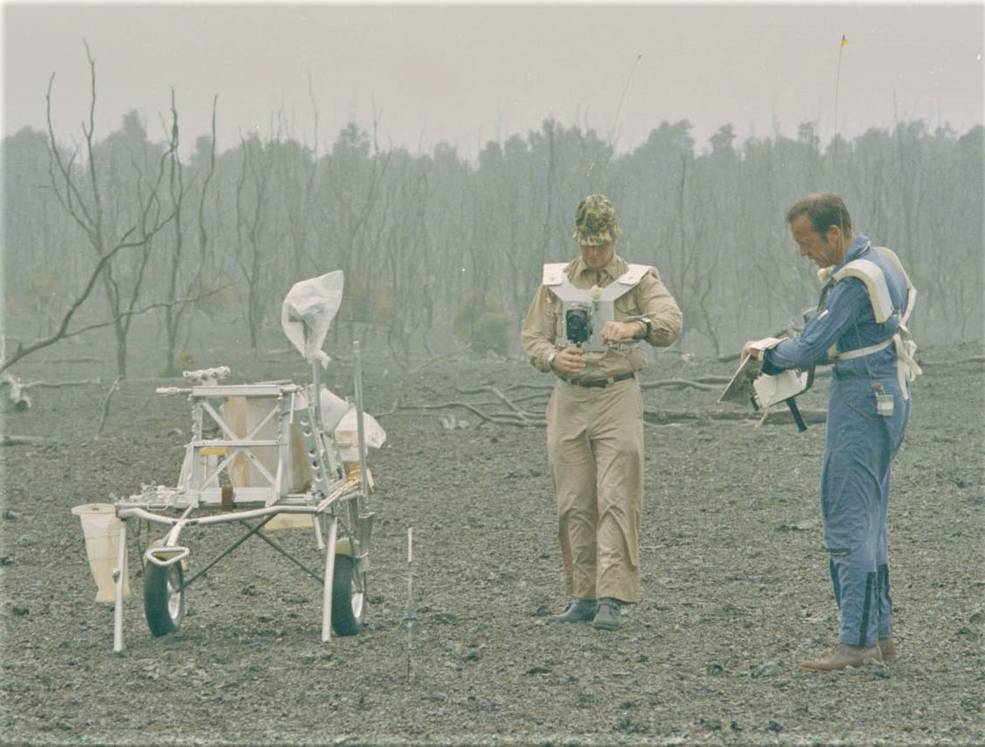
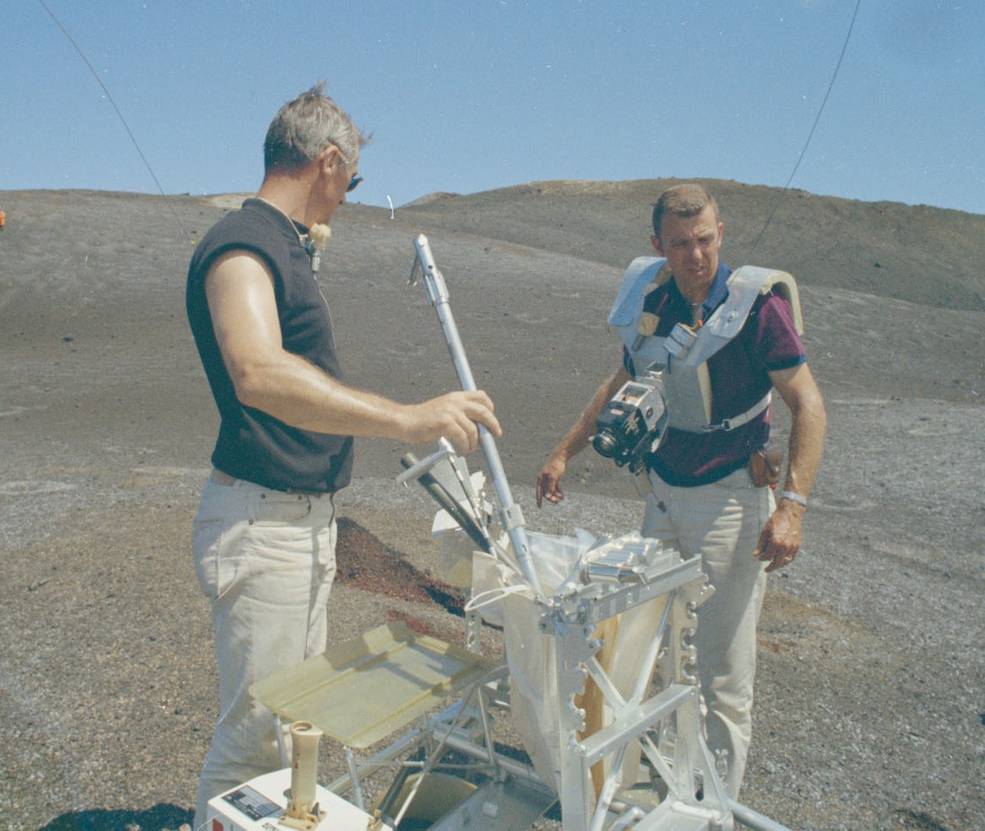
Left: Apollo 14 prime astronauts Mitchell (left) and Shepard with the MET
during the geology training trip to Hawaii. Right: Apollo 14 backup
astronauts Cernan (left) and Engle with the MET in Hawaii.
The announcement that Apollo 14 would attempt a landing at Fra Mauro resulted in a change in that crew’s geology training. Since scientists expected their original planned landing site at Littrow to be of volcanic origin, Apollo 14’s early geology sessions took place at volcanically relevant sites, such as the trip to Hawaii in April 1970. The Fra Mauro site included the Cone Crater impact feature, so subsequent training sessions, beginning with the early June trip to Kilbourne Hole, New Mexico, focused on areas with impact craters. The Apollo 14 crewmembers were the first to use the Modular Equipment Transporter (MET), a golf-cart like wheeled conveyance as an aid during their two planned lunar traverses and used it during the training sessions. Since Apollo 14 also emphasized science observations from lunar orbit, Roosa and Evans took part in flyover geology exercises near Flagstaff, Arizona, in mid-June. To rehearse the final 300 feet of the descent to the Moon’s surface, Shepard and Cernan flew training flights in the Lunar Landing Training Vehicle (LLTV) at Ellington Air Force Base near MSC. Apollo prime and backup commanders used the LLTV to practice the final 300 feet of the landing on the Moon.
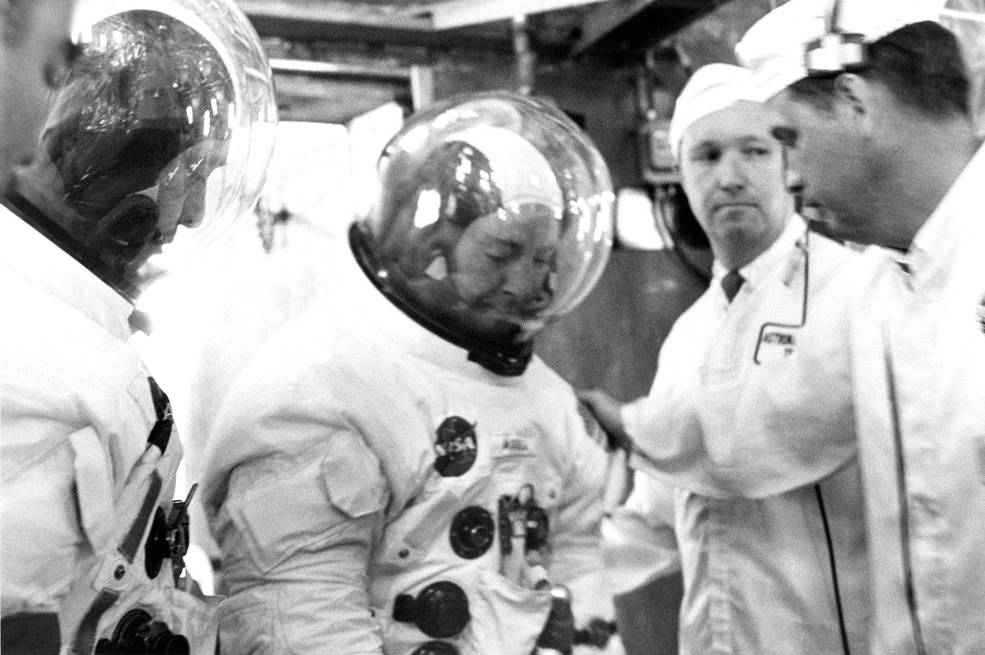
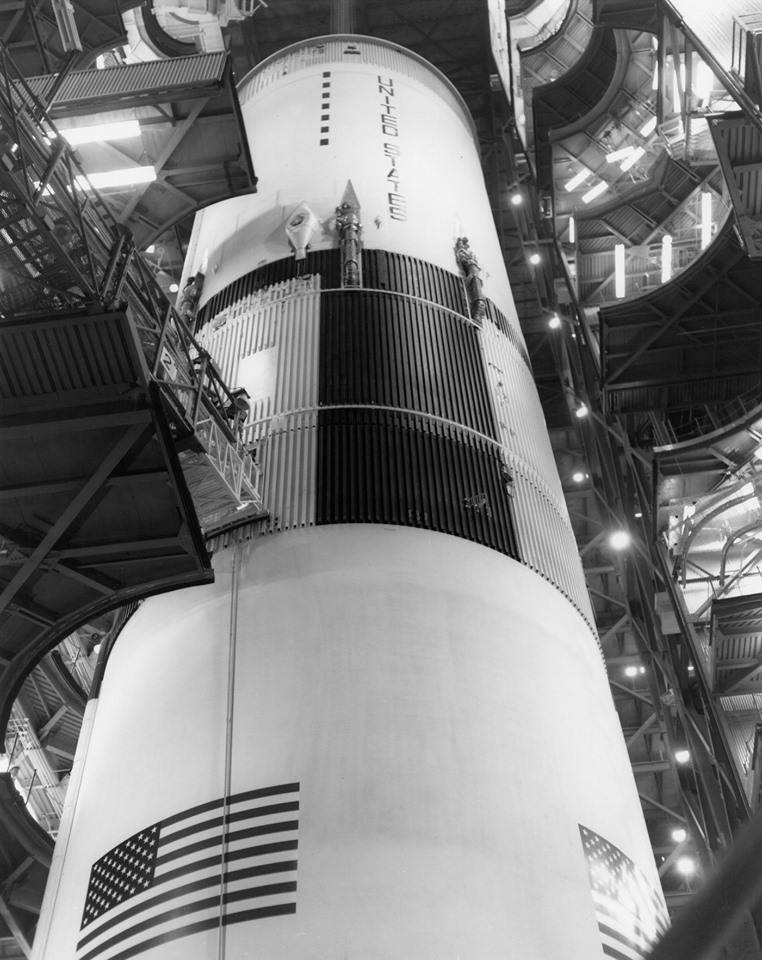
Left: Apollo 14 astronauts Shepard (left) and Mitchell prepare for a simulated
altitude test with the LM. Right: Workers in the VAB stack the Saturn V’s
second stage onto the first stage.
Workers in Kennedy Space Center’s (KSC) Vehicle Assembly Building (VAB) resumed stacking of the Saturn V rocket for Apollo 14. They had already placed the rocket’s first stage on its Mobile Launcher in January and then added the second and third stages on May 12 and 13, respectively. Technicians began testing the launch vehicle while engineers implemented modifications to the Apollo spacecraft as a result of the Apollo 13 accident. In KSC’s Manned Spacecraft Operations Building (MSOB), on May 26 prime crewmembers Shepard and Mitchell completed a simulated altitude chamber test with the LM, followed the next day by backups Cernan and Engle. The two teams performed the actual altitude tests on June 16 and 22, respectively, followed by simulated altitude tests with the Command Module over the next two days.
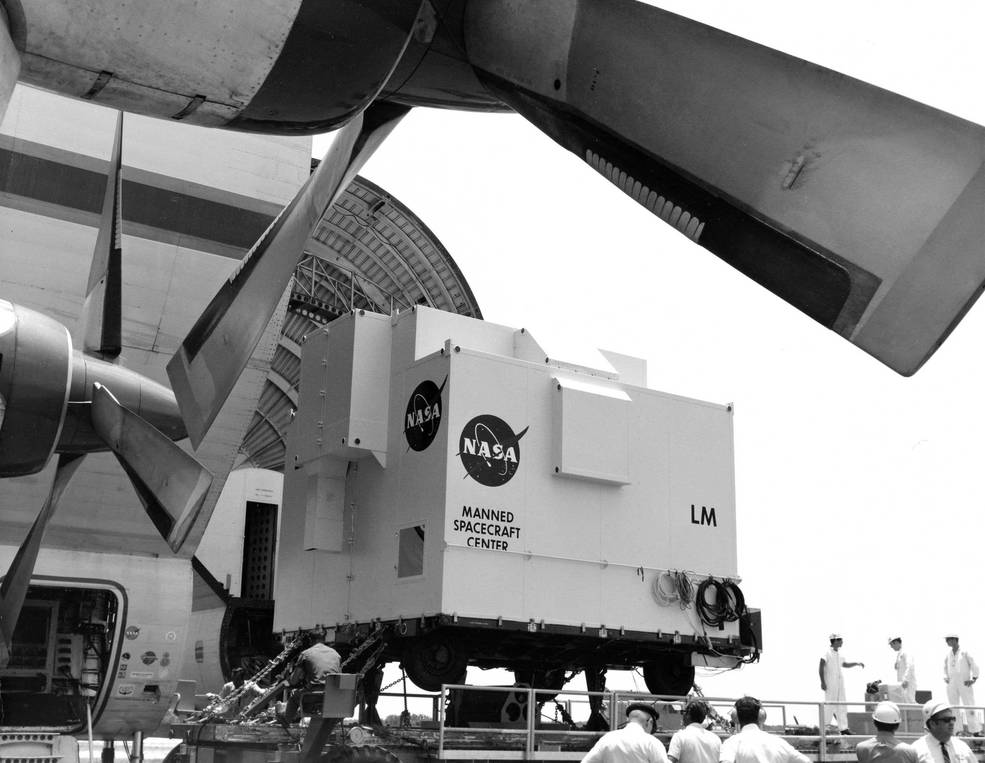
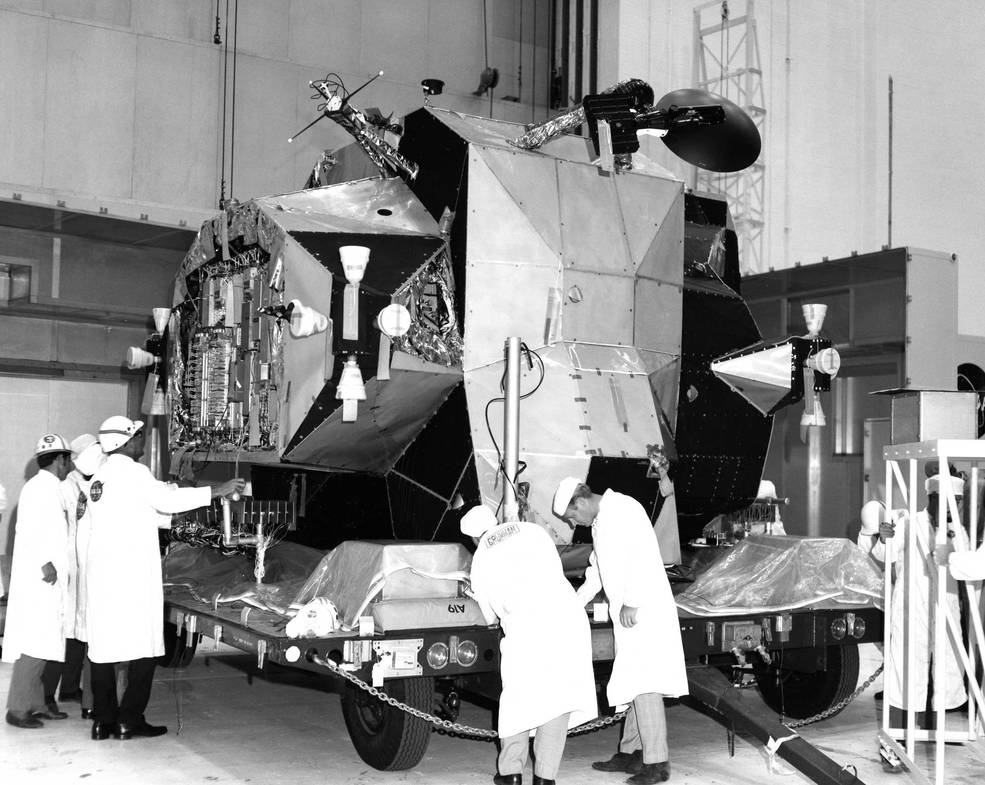
Left: LM-9 originally planned for Apollo 15 arrives at KSC.
Right: Workers inspect LM-9 ascent stage after its arrival in the MSOB.
In May 1970, mission managers were planning for Apollo 15 to follow Apollo 14 by about six months, and at the time it was planned as the last of the 10-day H-type missions, like Apollo 12-14, with the crew completing two lunar traverses using the MET as a tool carrier. LM-9, the lander originally planned for Apollo 15, arrived at KSC on June 8 and workers in the MSOB began inspections the next day. Apollo 15’s landing site hadn’t been formally chosen, but the Davy Rille, also known as the Davy Crater Chain, in the eastern portion of a large broken ring depression in the northeastern corner of the Sea of Clouds (Mare Nubium) was of interest to scientists. The Apollo 15 mission plans changed significantly in September 1970. Scott, Irwin, Gordon and Schmitt completed geology training exercises in the Orocopia Mountains of California May 6 through 13, and in the Mojave Desert in California and the area around Flagstaff, Arizona, including a visit to Meteor Crater, June 3-5. The participation of Schmitt, the only geologist in the astronaut corps, significantly aided the training sessions. Worden and Brand conducted orbital geology training in Menlo Park, California, May 11-12, making visual sightings and taking photographs from airplanes. Scott completed multiple training flights in the LLTV, adding to the skills he acquired in 1969 when he served as the backup commander for Apollo 12.
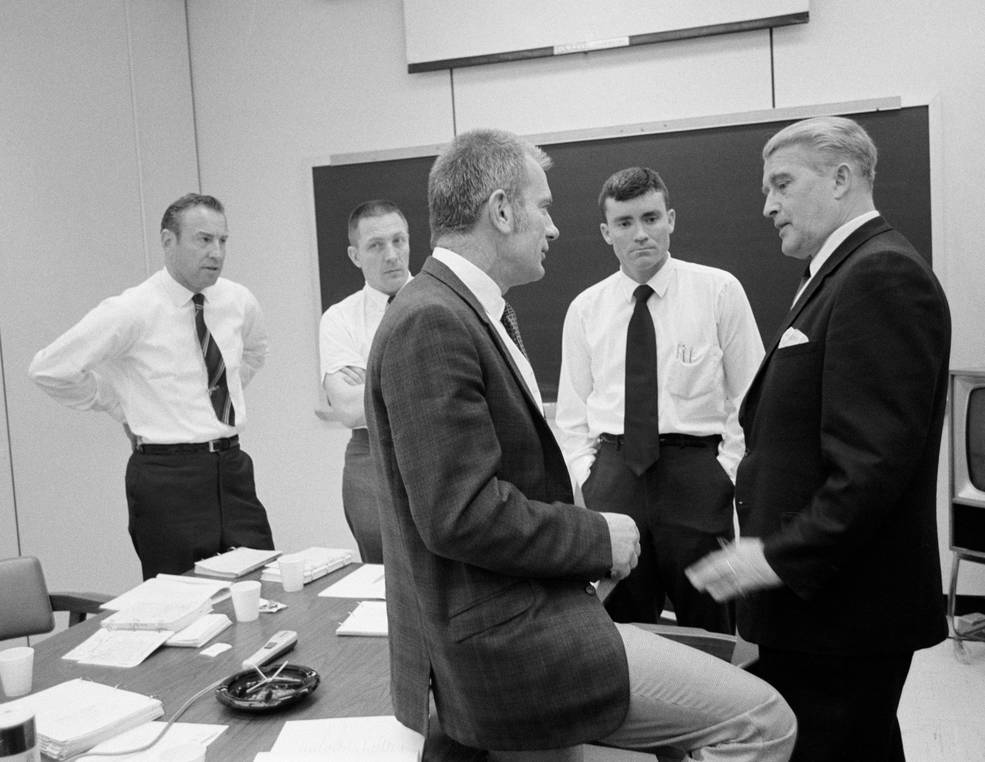
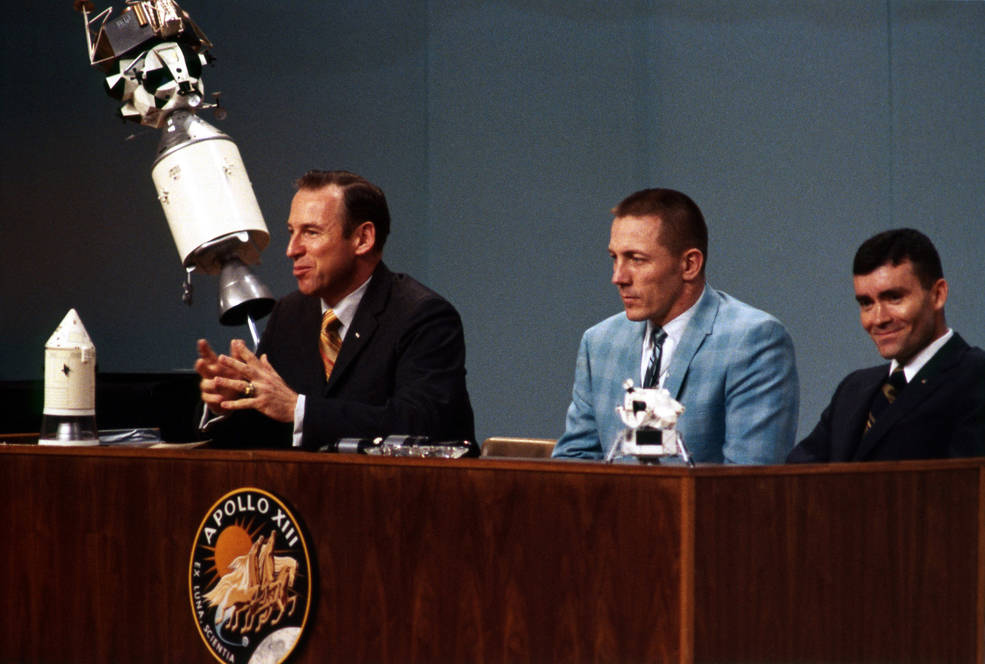
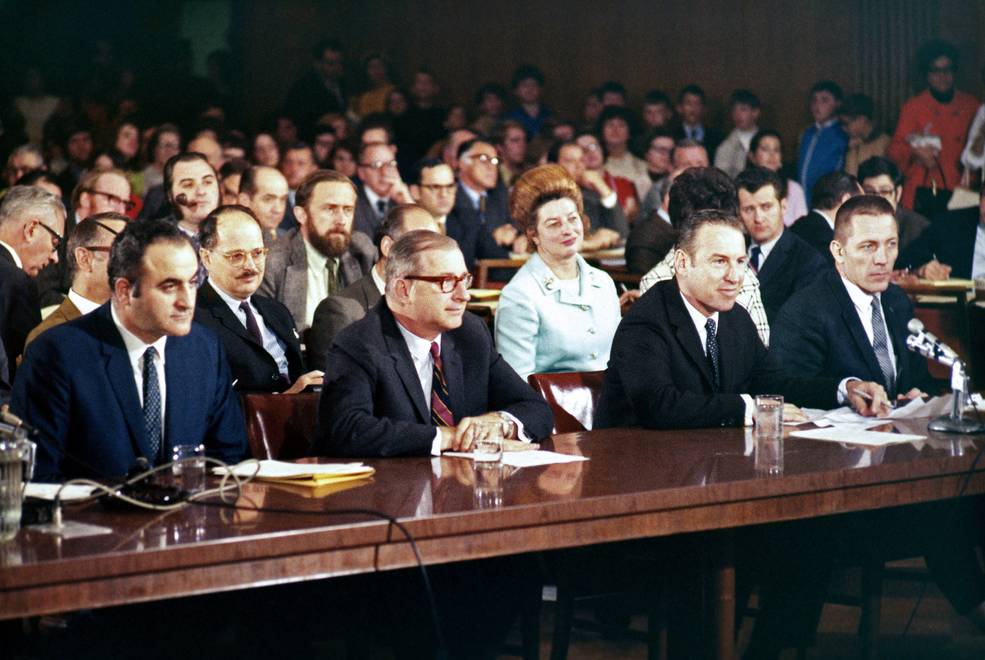
Left: Apollo 13 astronauts (in background, wearing white shirts, left to right) Lovell, Swigert and Haise during a debriefing with Donald K. “Deke” Slayton and Wernher von Braun. Middle: Apollo 13 astronauts (left to right) Lovell, Swigert and Haise during the postflight press conference. Right: At the Senate Committee hearing (left to right) Petrone, Paine, Lovell and Swigert.
On April 17, the day the Apollo 13 astronauts successfully splashed down in the Pacific Ocean, NASA Administrator Paine established the Apollo 13 Review Board, with Edgar M. Cortright, director of the NASA Langley Research Center, as its chair. The 8-member panel met for two months and presented its report on June 15. The astronauts began the post-mission debriefs the day after they returned to Houston and held a press conference at the Manned Spacecraft Center, now the Johnson Space Center in Houston. On April 24, Lovell and Swigert, accompanied by NASA Administrator Paine and Apollo Program Manager Rocco A. Petrone, appeared before the Senate Aeronautics and Space Committee to discuss their mission.
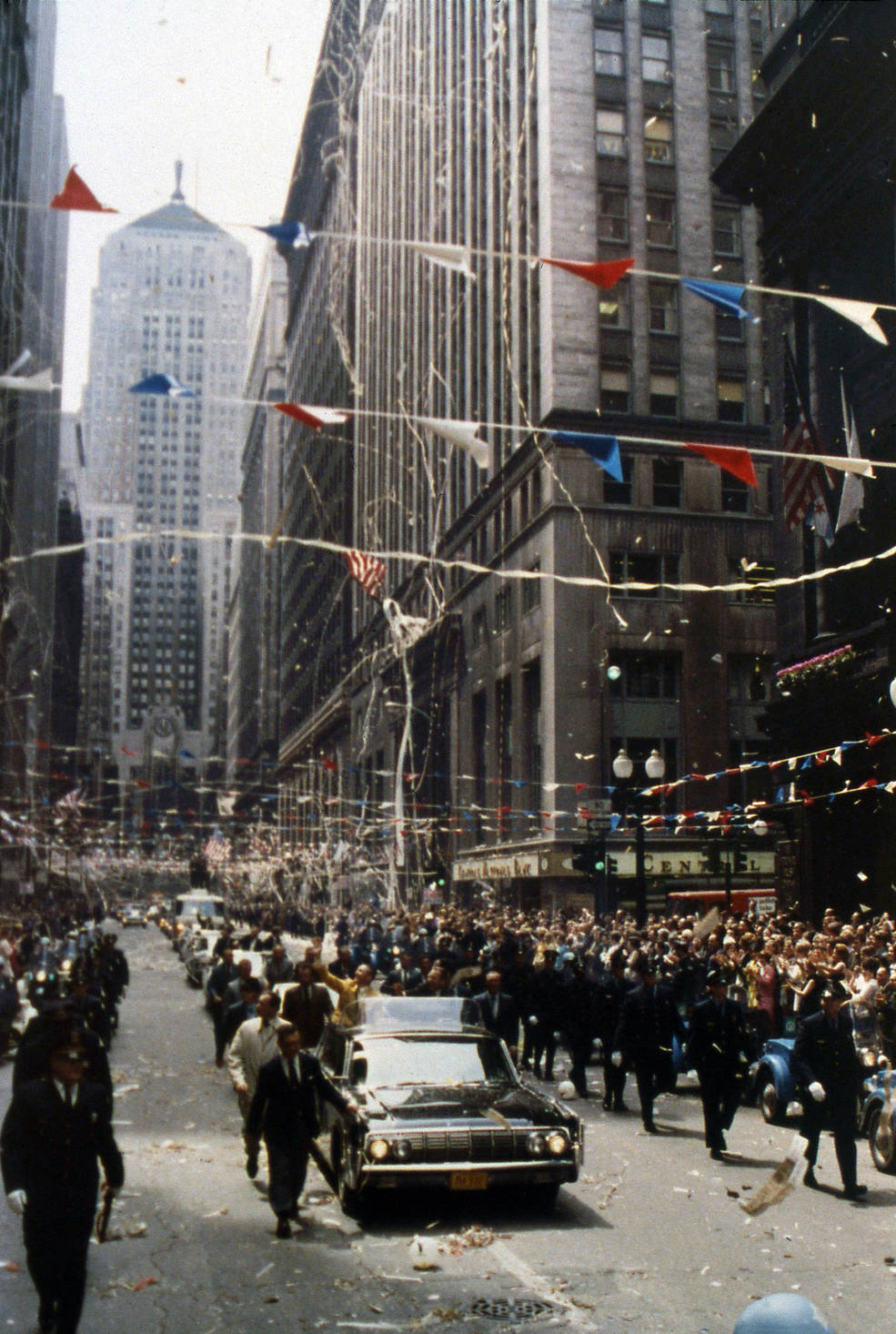
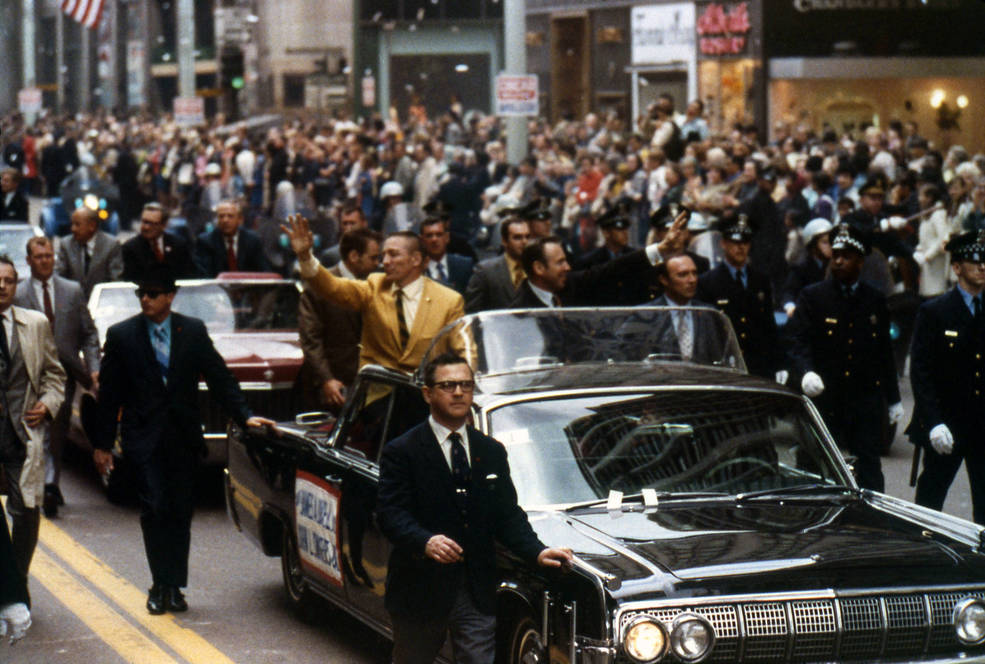
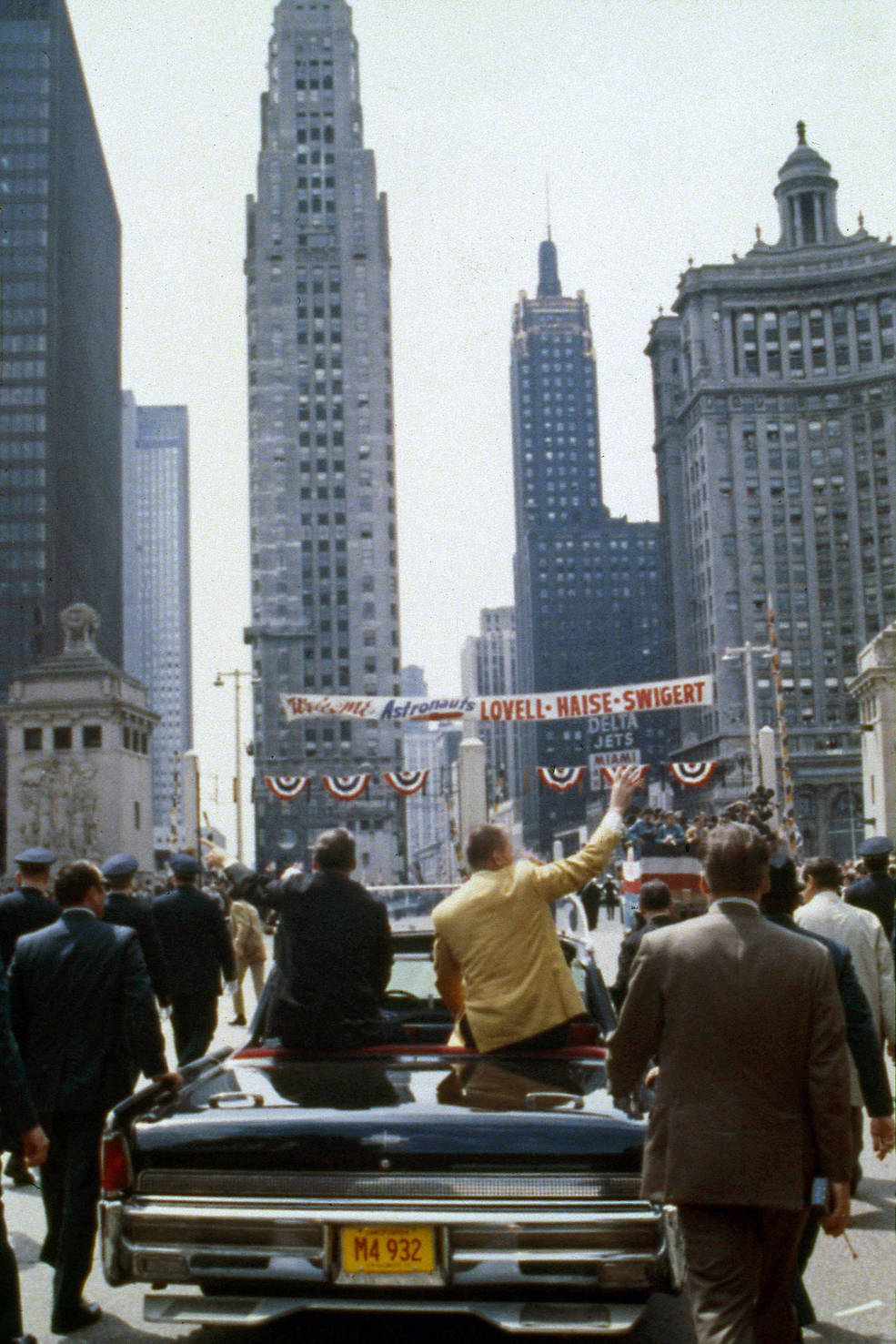
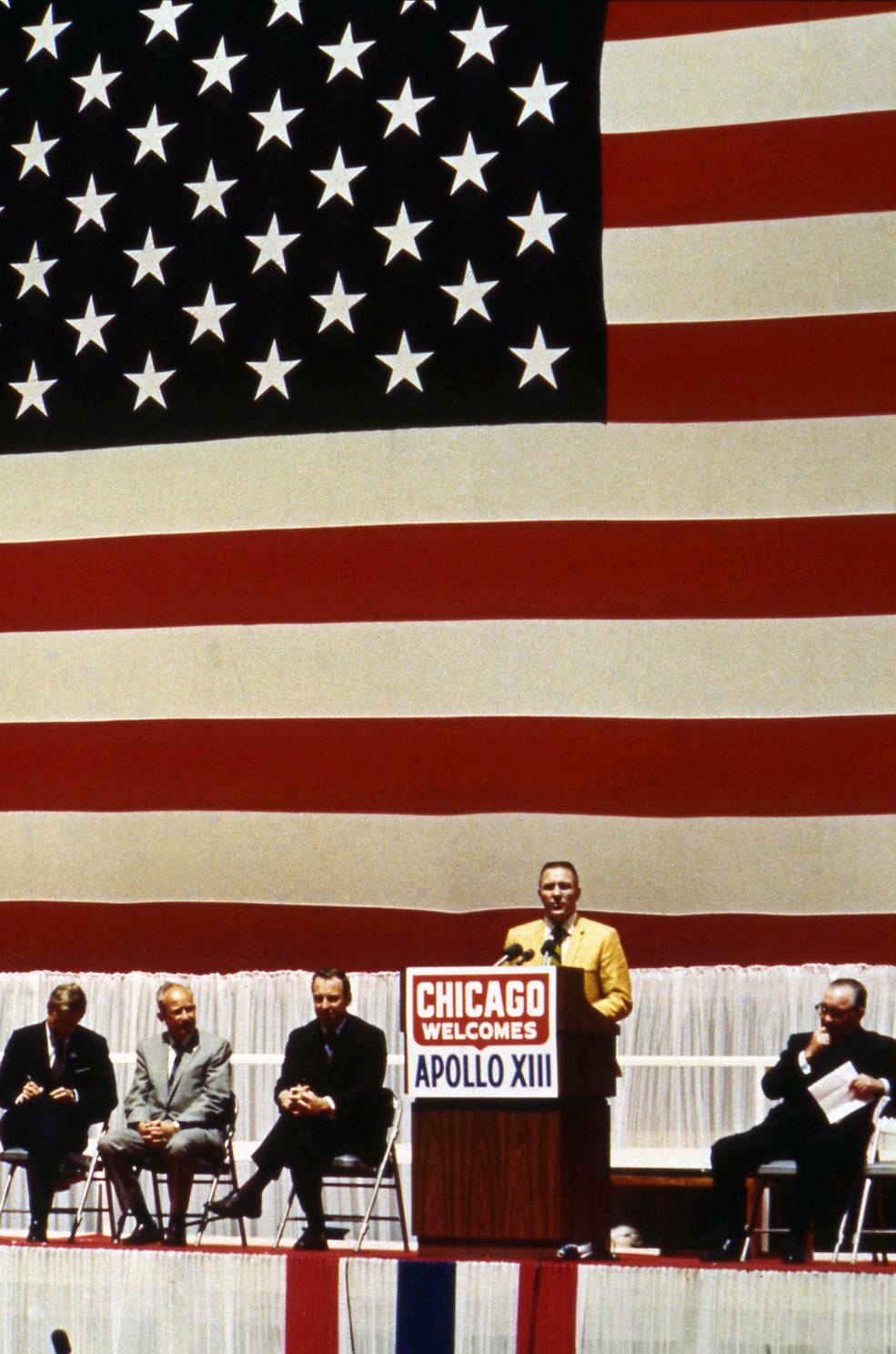
Scenes of the parade and welcome reception for the Apollo 13 crew in Chicago.
To celebrate the safe return of Apollo 13 to Earth, on May 1 the city of Chicago threw a parade that Lovell and Swigert attended, but Haise was not available. Mayor Richard J. Daley welcomed them at Civic Center Plaza (now Daley Plaza).
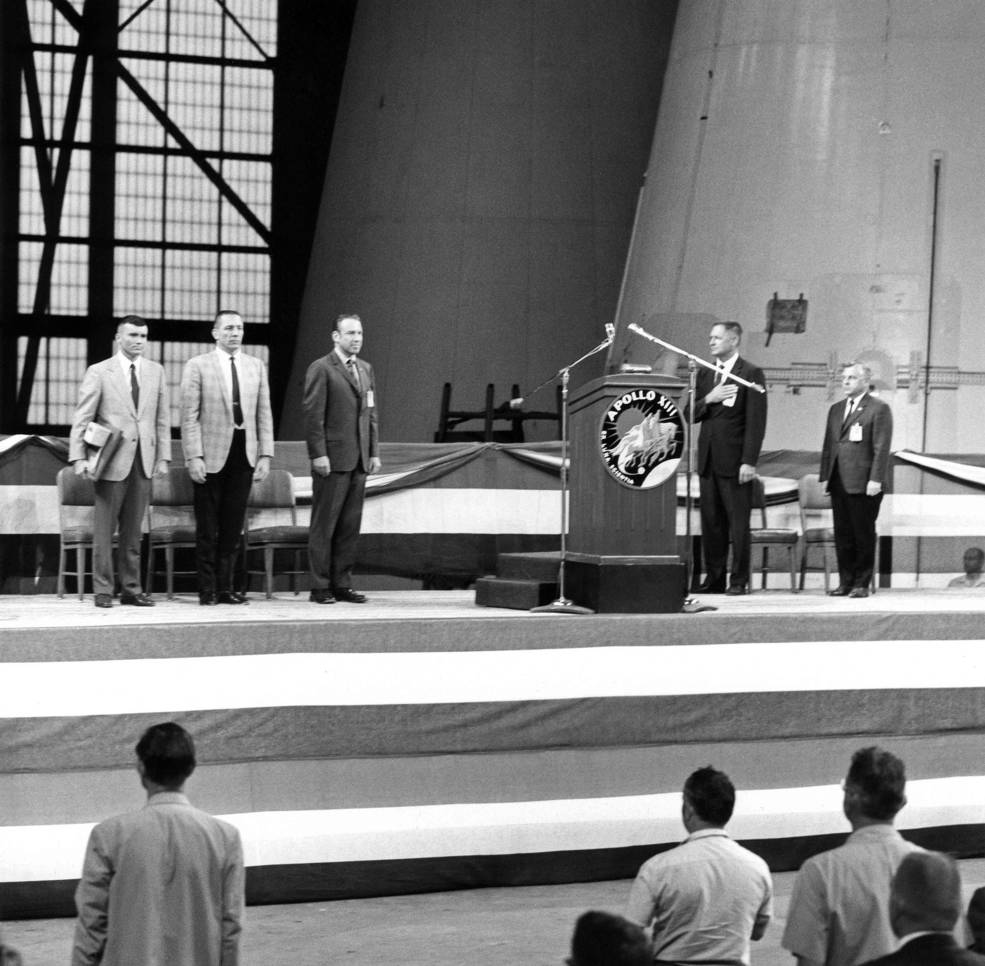
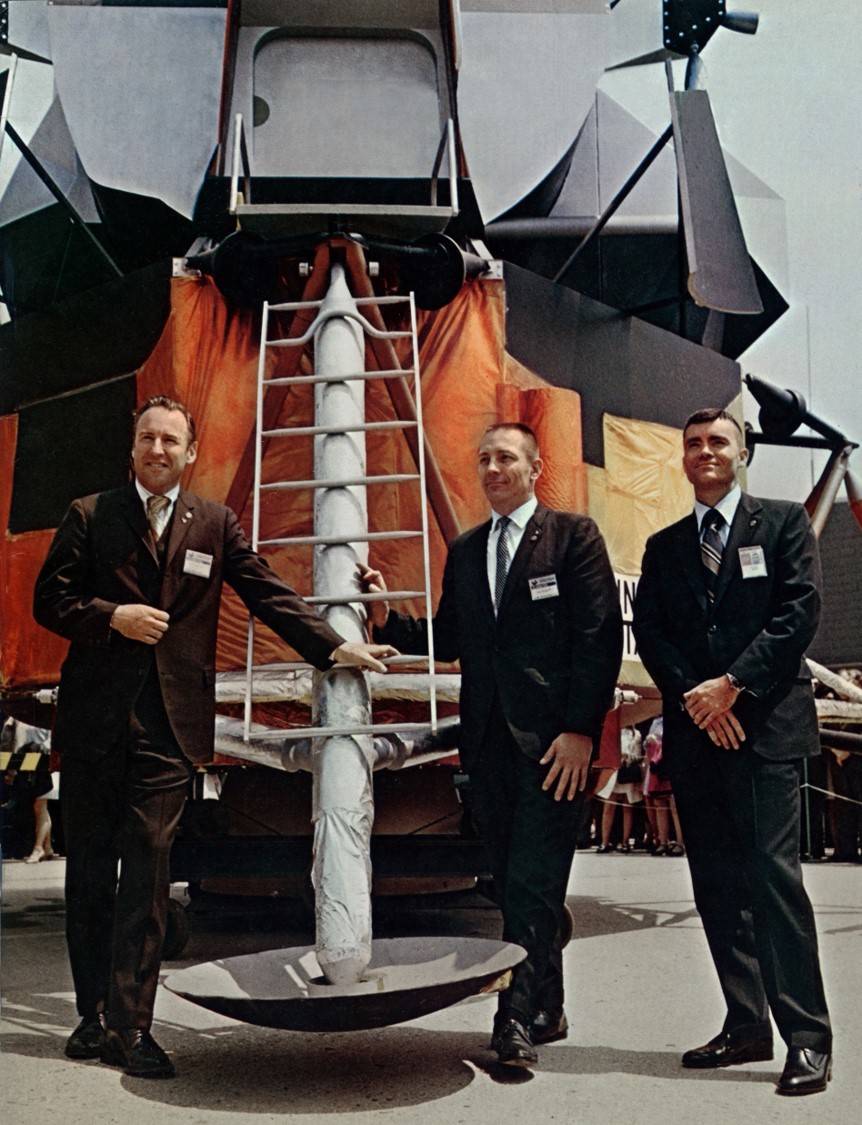
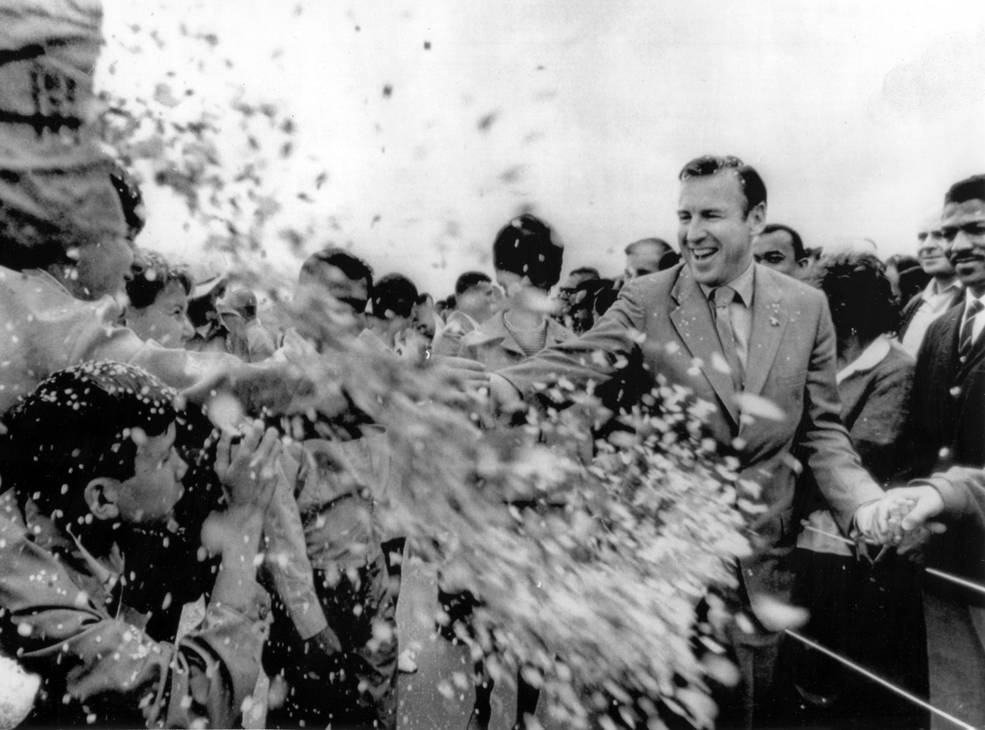
Left: Reception for the Apollo 13 crew in KSC’s VAB. Middle: Apollo 13 astronauts
(left to right) Lovell, Swigert and Haise at the Grumman plant. Right: Workers
shower Lovell with confetti at the NAR plant.
On May 4, Deputy Director Miles “Mike” Ross welcomed Lovell, Swigert and Haise back to KSC, where during a reception in the VAB he presented them with photographs of their launch three weeks earlier. In turn, the astronauts thanked the 7,500 assembled workers for their hard work, presenting them with a signed armrest from the Lunar Module (LM) Aquarius as a memento from their mission. The next day, Lovell, Swigert and Haise travelled to the Grumman plant in Bethpage, New York, where they thanked the workers for the skill with which they built Aquarius, their lifeboat after the accident. And finally on May 6, it was on to the North American Rockwell plant in Downey, California, where the astronauts thanked the employees who manufactured their Command Module Odyssey. The Apollo 13 astronauts’ travel schedule relaxed somewhat over the next few months until they departed for their Presidential Goodwill Tour to Europe in October 1970.
…to be continued.
News events from around the world in May 1970:
May 2 – Diane Crump becomes the first woman jockey to ride at the Kentucky Derby
May 4 – National Guard kills 4 students at Kent State University in Ohio
May 8 – The Beatles release their “Let it Be” album, the group’s last
May 15 – Elizabeth Hoisington and Anna Mae Mays named first female US generals
May 23 – Grateful Dead‘s first performance outside US (England)
May 26 – The Soviet Tupolev Tu-144 becomes the first commercial transport to exceed Mach 2
May 31 – Magnitude 7.75 earthquake off the coast of Peru kills nearly 70,000 people and sets off the world’s deadliest avalanche























